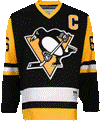
Ice hockey is a team sport played on ice, in which skaters use wooden or composite sticks to shoot a hard rubber puck into their opponent's net. In some countries the sport is known simply as "hockey". A fast-paced, physical sport, hockey is most popular in areas of North America and Europe that are sufficiently cold for natural reliable seasonal ice cover.
The Rules of a hockey games are separated in ten sections. Every section contains mains rules for playng hockey.
Random photos











